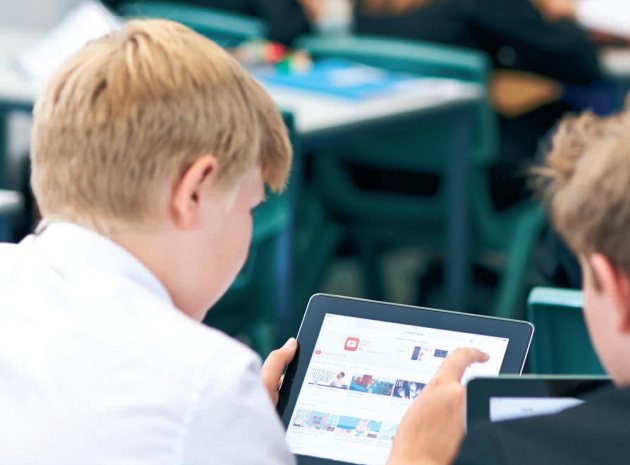Six years ago you couldn’t buy a tablet apart from in a pharmacy. Today, our children leave school facing a working world so removed from a generation ago that their learning methods need a radical rethink. So how do we prepare our students to thrive in the digital workplace – and how do we prepare and educate teachers? What support are they receiving to embrace the digital revolution and how are they coping?
The picture is patchy. Hurdles emerge from many hidden corners, but there are pockets of brilliance and inspiration and there are routes to clearing the obstacles. At Techknowledge for Schools, our job is to share the best practice of pioneering schools using technology to great effect. The charity, formerly known as Tablets for Schools but recently rebranded to reflect a broader mission, exists to help educators to transform learning through technology.
By sharing the results of our continuous independent research in 40 schools, our role is to understand the benefits, challenges and impact of employing digital methods of teaching. The schools we work with use 1:1 devices in the classroom (they’re integral to how material is taught, not viewed as replacements for textbooks), with most children taking them home to continue projects and to share their work with their parents. We show teachers how technology can be used as a tool to engage, motivate, inspire and bridge ‘the digital divide’ and show students how their learning can be personalised to their needs and pace. By sharing best practice through our website, regional workshops and the media, we’re growing peer-to-peer advice and providing resources for hesitant schools hovering on the edge of ‘going digital’. It’s about helping them move to the next level, whether that’s providing students with mobile devices in the first place, or giving teachers the confidence to get them out and use them daily.
Schools making the leap need help to make the most of the new technology and get a deployment scheme up and running. Our research programme led by Family, Kids & Youth is backed by head teachers, academics, industry and government and we focus on forming partnerships that will help schools clear the hurdles and make what, for some, is a huge leap of faith. Above all though, schools must first address why they implement technology and then look at the how.
Learning together
The challenges faced by schools who want to embrace digital learning are many. Our research over four years shows us that the most pressing is the lack of any digital literacy element in teacher training. The absence of a consistent national infrastructure or digital learning eco-system, insufficient broadband and Wi-Fi provision, potential pupil distraction issues, and a refusal by some school leaders to face the reality of their students’ future digital working environment are real worries that will take time and expertise to address. But there is momentum, and change is happening.
We’re currently asking hundreds of teachers how they feel about using mobile technology to teach and what impact they think it has had on their pupils’ level of attainment, engagement, confidence, their ability to work collaboratively and their sense of autonomy. Some schools are so advanced in their integral use of mobile technology that they can’t imagine operating without it; others still grapple with their pupils knowing more about apps, interactive screens and sharing platforms than they do.
If you’re a teacher who accepts that smartphones, tablets, netbooks and digital bodywear are an inextricable part of our children’s future, not least in their working lives, there is a wealth of support at your disposal. Some adults still view tablets simply as entertainment devices, but of course, they can help to unlock potential, release creativity and provide intellectual challenge.
For students with special needs, mobile technology can be revolutionary. Self-paced learning, and the ability to make and share videos to answer questions rather than writing prose (our research uncovered several cases of this working wonders for children with dyslexia) bring a whole new level of engagement, inspiration and determination to learn.
If you’re about to create your vision, strategy and plan for digital learning, consider first:
- your curriculum and pedagogical model
- your school development plan
- your school’s appetite for risk and change
- current software applications
- current teaching materials (PDFs, Power Points, paper)
- systems architecture (servers, network, wireless access points, internet) and budget.
Ahead of implementation, you might introduce seminars for parents, who need to feel comfortable and involved. You’ll need pre-tablet and continuous professional development training for staff. Many schools have done this – our website and teacher training workshops will show you how.
Some of the biggest benefits to using mobile technology that we hear about from schools are an increase in student and parent engagement, a sense of maturity and responsibility among students and a healthy closing of the gap between school and home. They are surely powerful reasons to embrace the digital revolution that might be heading towards your school, and if you get stuck, we’d be happy to help (www.techknowledge.org.uk).
About the author
Mary palmer is director of techknowledge for schools (www.techknowledge.org.uk), an educational charity that brings together teachers, industry leaders and academics using robust, independent research on how tablets and mobile technology affect learning and attainment.









